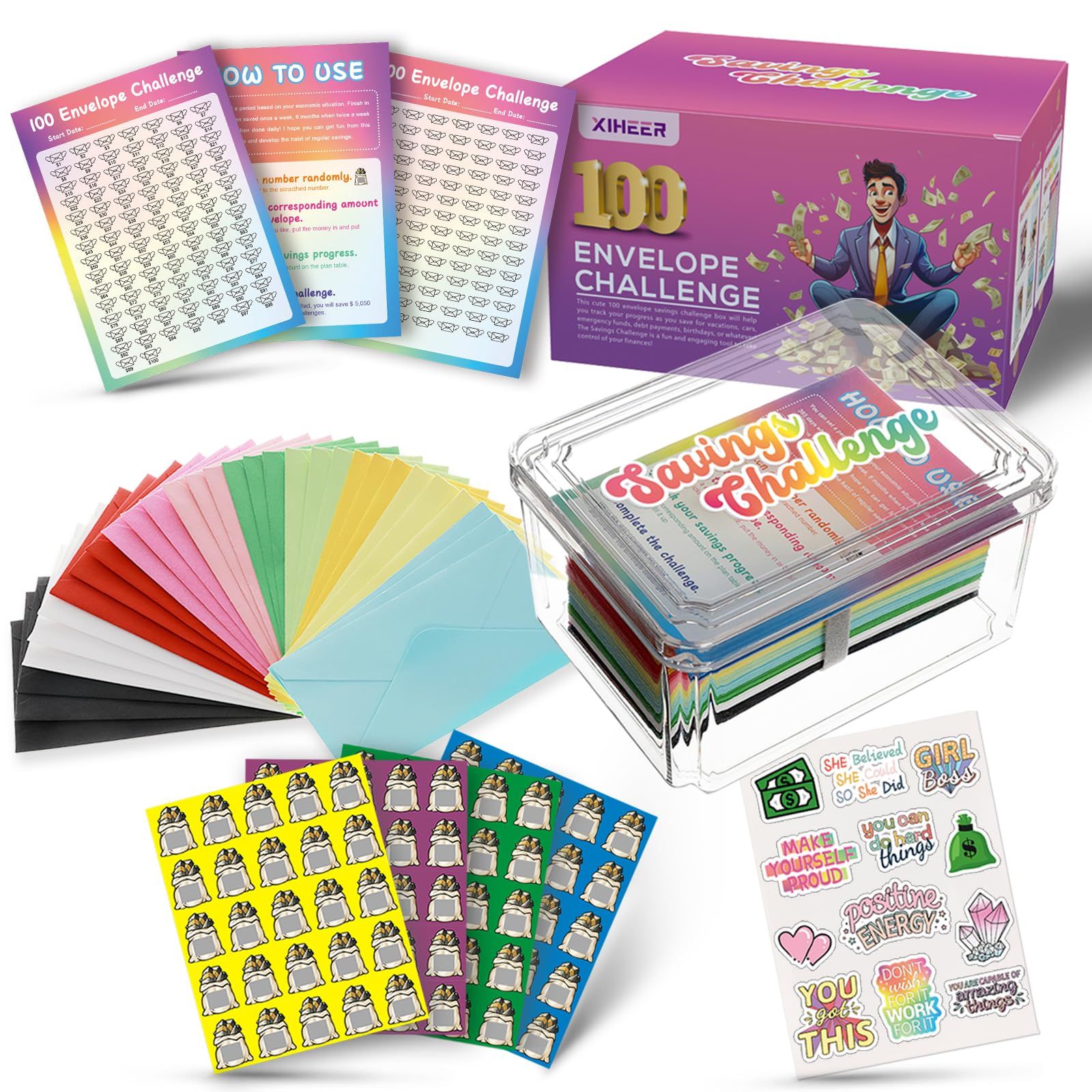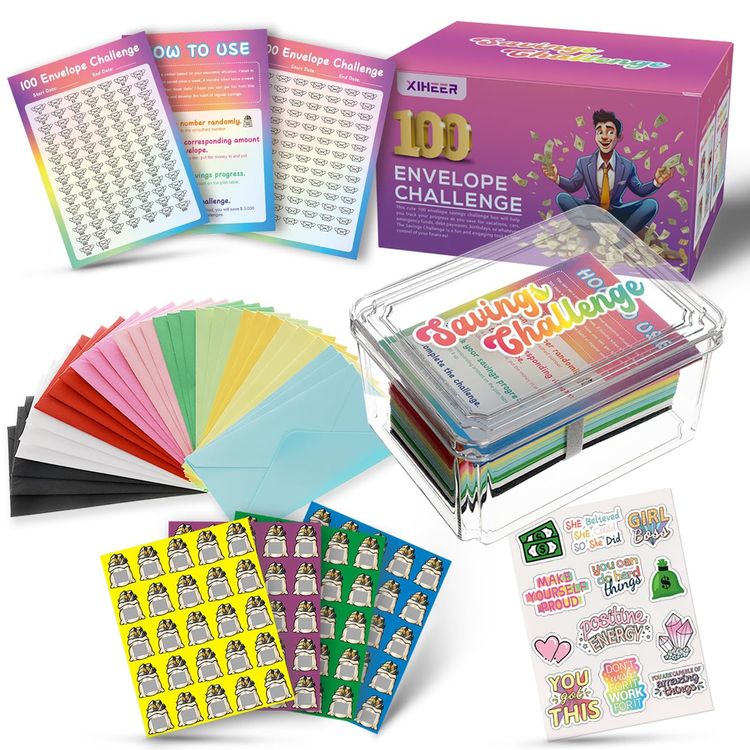Saving money doesn't have to feel like a chore. It can be fun when you turn it into a game! Whether you're looking to build an emergency fund, pay down debt, or save for a big purchase, there are plenty of creative ways to make the process enjoyable. As someone on the journey to financial stability, gamifying savings helped me stay motivated and hit goals faster than expected.
In this article, we'll explore 11 fun money games for adults that will help you boost your savings while having a little fun.
1. The Rainbow Savings Game

One of the most fun and visually rewarding ways to save is by playing the Rainbow Savings Game. This game uses the classic idea of saving a certain amount of money each week but with a twist. Each week, you choose a color from the rainbow and associate it with a specific dollar amount. For example, red could represent saving $10; orange could represent $20, and so on.
The key is to try to fill the "rainbow" by the end of a set period, like a month or even a year. This not only makes saving feel more structured but also adds a burst of color and excitement as you track your progress.
2. The 40% Rule Savings Challenge
This task is straightforward but very successful. The goal is to save 40% of your salary, which is far more than most individuals usually strive for. This will seem like a big change if you're used to saving about 10% of your income, but it can be worthwhile.
At first, it could seem overwhelming, but it helps to break it down into smaller chunks. Reviewing your monthly spending and reducing non-essential items should be your first steps. This can mean reducing the number of impulsive purchases you make when you go shopping, cooking more meals at home instead of going out to eat, or canceling subscription services you don't use.
3. Craft Your Own Savings Board Game
If you enjoy crafting or DIY projects, creating your savings board game might be the perfect way to make saving feel like a hobby. Start by designing a board with various challenges and rewards. The goal is to move along the board by saving money.
For example, you could land on a "Save $50" space and add that amount to your savings, or "Cut your spending on entertainment this week" could be a challenge that earns you a reward like extra savings for the following week.
4. 52-Card Pickup Savings Challenge
This fun challenge involves using a deck of cards to structure your savings for an entire year. Each card represents a specific amount of money you will save weekly. The numbers can range from $1 to $52, with each week's amount corresponding to the card drawn.
At the end of the year, you'll have saved $1,378 (if you stick to the rules). This savings strategy is a great way to boost your emergency fund or save for a significant purchase, like a vacation or a new gadget.
What makes this challenge exciting is the surprise factor—you never know what amount you'll have to save each week. When I tried this challenge, I was surprised by how much money I could save without realizing it!
5. End-of-Receipt Savings Challenge
Have you ever looked at the total on a receipt and wished you had spent less? The End-of-Receipt Savings Challenge encourages you to save the change from every receipt. For every purchase, round up the total to the nearest dollar and save the difference.
For instance, if your grocery total is $7.75, you would save $0.25, rounding up to $8. This might seem like a small amount, but over time, it adds up!
I used this method for a few months and was shocked at how much spare change I saved—without any significant lifestyle changes. This challenge is great for those who want to save money without feeling like a massive effort.
6. 1% More Savings Challenge

This is a straightforward yet effective savings challenge that emphasizes small steps forward. The goal is to increase your savings by simply 1% over the previous month. Aim for $202 this month if you saved $200 last month. Aim for $505 if you have $500 saved. You may develop a saving habit without going overboard with this challenge. This small 1% increase can result in a substantial boost in savings over the course of a year. The great thing about this challenge is that it promotes steady progress without straining your budget.
7. Be Your Employer
If you've ever dreamed of starting a business, why not turn that dream into a money-saving challenge? Treat yourself as your employer and set up a direct deposit from your paycheck into a separate savings account. Pay yourself first, and then cover your bills with what's left.
This method works well because it mimics the structure of paying employees, where you prioritize savings before anything else. By treating yourself as a business and paying yourself first, you'll be more disciplined in saving.
8. The 10% Gross Pay Savings Challenge
This challenge involves saving 10% of your gross income each month. Unlike the 40% rule, which asks for a much more significant percentage, this challenge is more accessible and can be a great starting point for people new to saving or with tight budgets.
While it may seem small, saving 10% of your gross income is a solid way to build financial security. Over time, you'll gain confidence in your ability to save and can increase the percentage as your finances improve.
I recommend automating this transfer as much as possible. Set it up so that the 10% is automatically deposited into a separate savings account before you even have the chance to spend it.
9. Double the Distance, Half the Time
The idea is to set a savings goal, then double it in half the time you originally planned to achieve it. For example, if you plan to save $1,000 over six months, aim to save $2,000 in three months.
The pressure to hit a larger goal in a shorter timeframe can be intense, but it can also help you stay focused and motivated. This challenge will push you to be more creative with your money-saving strategies.
I tried this challenge during the holiday season one year, and it was exhilarating to see how quickly my savings grew when I set a tighter deadline for myself.
10. The Jerry Seinfeld Savings Chain
Inspired by comedian Jerry Seinfeld's productivity method, this challenge revolves around consistency. The idea is simple: for each day you save money, you mark a red X on your calendar. The goal is to keep the chain going for as long as possible. Don't break the chain!
For example, if your goal is to save $5 a day, every day that you save, mark off the day on the calendar. If you miss a day, the chain breaks. The visual reminder of the chain helps you stay on track and can be an incredibly motivating tool to build long-term savings habits.
I've used this method, and there's nothing quite like seeing that long string of reds on your calendar and knowing that you've consistently saved money daily.
11. Gamify Your Savings with Apps and Board Games

Saving money isn't just about setting aside money—it can also be about making the experience fun through apps and board games. Many personal finance apps incorporate gamification elements, rewarding you for meeting savings goals or tracking your spending. Apps like Qapital, Digit, and Acorns turn saving money into a fun, engaging activity, allowing you to set goals and earn rewards as you progress.
Board games are also a fantastic way to gamify your savings. Games like Monopoly and The Game of Life allow you to practice money management strategies in a simulated environment. Playing these games with friends or family can add more fun.
Savings Apps & Games
There are plenty of apps and games designed to help you save more money. Some use techniques like rounding up your purchases to the nearest dollar and saving the change, while others encourage you to automate savings.
What are the five savings challenges?
The 5 Savings Challenge is a simple approach where you save $5 daily. It's an easy way to start building a savings habit without feeling overwhelmed.
What is the trick to saving money?
The key to saving money is consistency. Whether you save a little or a lot, the most important thing is to make saving a regular habit.
How do you do a 30-day savings challenge?
To do a 30-day savings challenge, set a goal to save a specific amount each day for 30 days. It could be as little as $1 or as much as you can manage, and by the end of the month, you’ll have a nice little cushion saved up.
Conclusion
Saving money doesn't have to be boring. By turning it into a game, you can stay motivated and make financial progress without feeling like you're sacrificing your fun. Whether you use one of these games or develop your own, the most important thing is to get started.
The journey to financial freedom doesn't have to be a solo mission—making it a game can turn it into something enjoyable. Remember, consistency is key, and every dollar you save brings you one step closer to achieving your financial goals. Let the games begin!
Frequently Asked Questions
Q: How can money games for adults help me save more?
A: Money games make saving fun and engaging, encouraging you to stick with your savings goals. They also provide a safe space to practice financial skills and concepts.
Q: Are these money games suitable for all ages?
A: While some games are designed for kids or teens, many are perfect for adults of all ages. Choose games that align with your financial knowledge and goals.
Q: Can I play these money games for adults with friends or family?
A: Absolutely! Playing money games with others can make the experience even more enjoyable and motivating. Challenge each other and celebrate your savings wins together.
Q: Do I need any special equipment or apps to play these money games?
A: Many of these games can be played with items you already have at home, like a jar, calendar, or deck of cards. Some games may require downloading an app or purchasing a board game, but there are options for every preference and budget.




